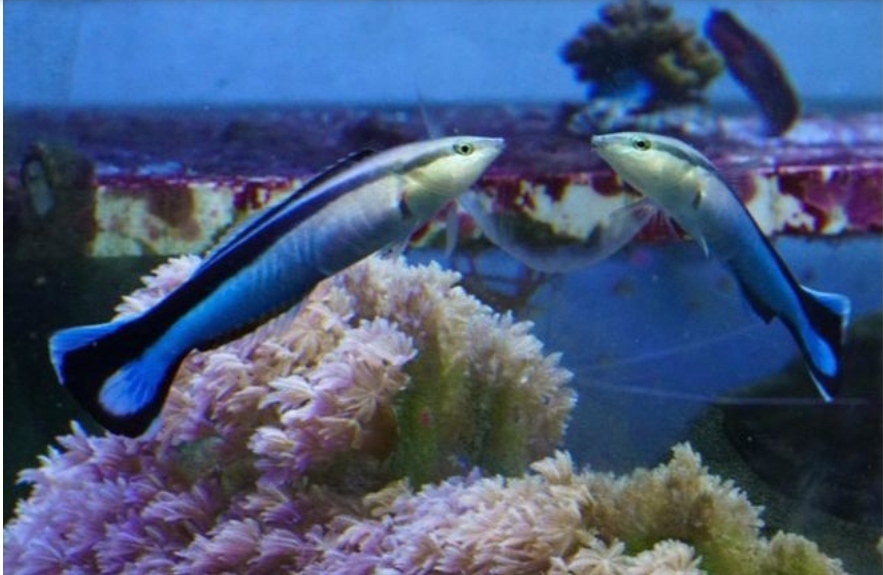Fish can recognize their faces in mirrors, photographs

A bluestreak cleaner wrasse looks into a mirror in water in a tank. (Provided by Osaka Metropolitan University)
By TAKAHIRO TAKENOUCHI
Fish can recognize themselves not only in mirrors but also in still photographs, a study found.
A research team from Osaka Metropolitan University showed fish images of themselves, but the pictures were doctored so that stains representing parasites appeared on their throats.
The fish tried to rub off the stains by scraping their throats against sand and other objects. They did not react that way when shown photos of other fish, the team said.
“We proved that fish have a kind of self-consciousness to recognize themselves,” said team member Masanori Koda, a specially appointed professor of comparative cognitive science at the university. “The findings might fundamentally overturn the common belief that fish lack minds.”
For the experiment, the team used bluestreak cleaner wrasse, a species measuring more than 10 centimeters long that inhabits waters off Wakayama Prefecture and the southwestern Nansei Islands.
The fish have different patterns on their faces, resembling freckles.
An earlier study on the same species showed they can recognize themselves in a mirror.
At first, the wrasse attempted to attack the mirror because they mistakenly thought a rival was in the reflection. But the aggressive actions ceased after they swam upside down and did other maneuvers, thus recognizing it was themselves in the mirror, according to the study.
In the latest experiment, the wrasse were trained with a mirror and then shown their own photos.
Their throats in the images had brown parasite-like stains. It was impossible for the fish to check their own actual throats.
Six of eight wrasse tried to remove the mock parasites by rubbing their throats on the sand at the bottom of the tank.
Photos showing their bodies without stains or pictures of other fish did not elicit the rubbing behavior.
But they did attack photos of other fish or remained on alert.
The wrasse did not display hostility before their own images.
The team examined what part on the body the fish used for self-identification.
The wrasse were shown four types of photos: their own faces and bodies; their own faces combined with bodies of other fish; their own bodies and faces of other fish; and faces and bodies of other fish.
They did not attack the two types of photos showing their own faces.
The scientists deduced that the species knows what its face is like, allowing the variant to recognize itself through its face on not only mirrors but photos.
Bluestreak cleaner wrasse likely identify faces by profile rather than straight-on views, according to the team.
The findings have been published in the Proceedings of the National Academy of Sciences of the United States of America, the official journal of the National Academy of Sciences.



